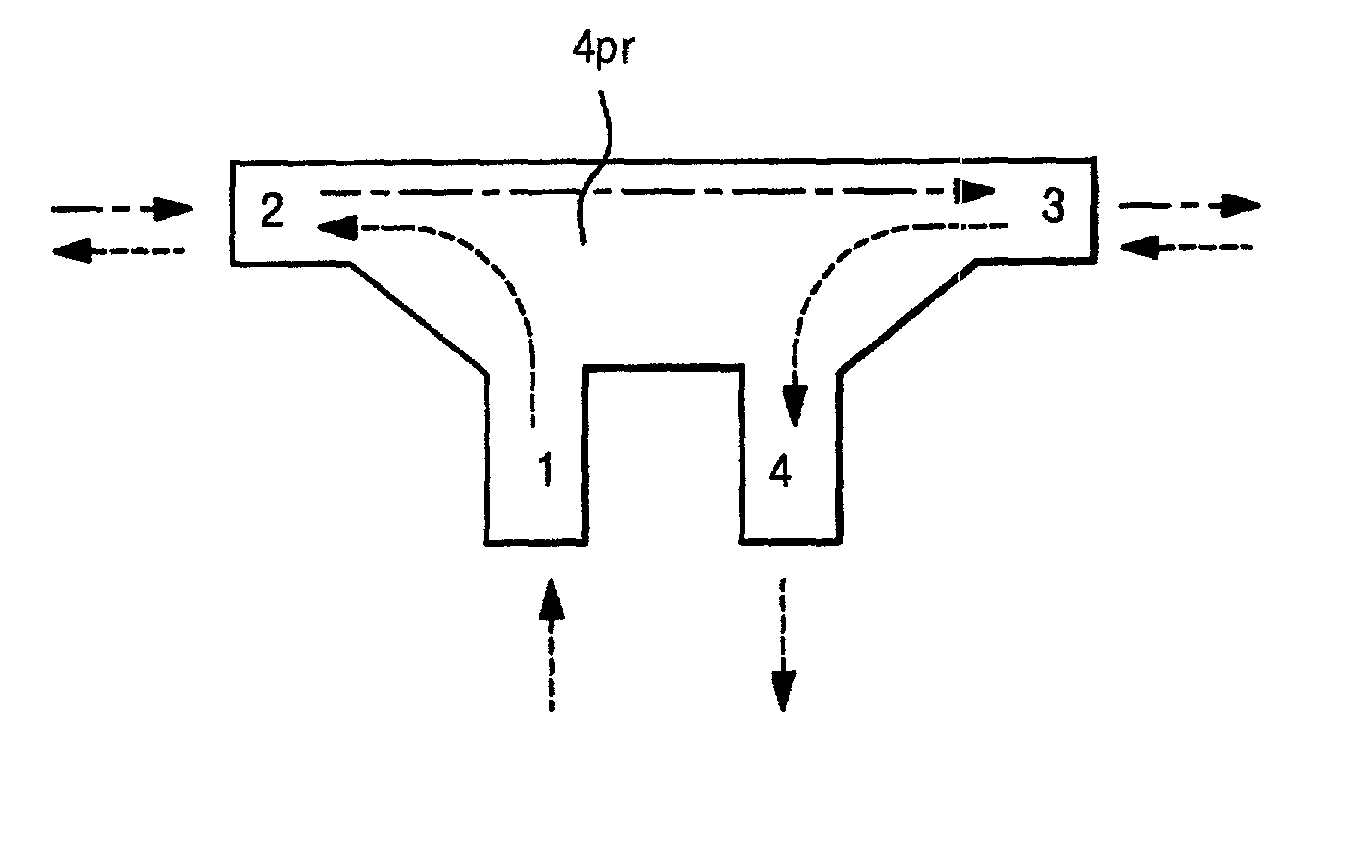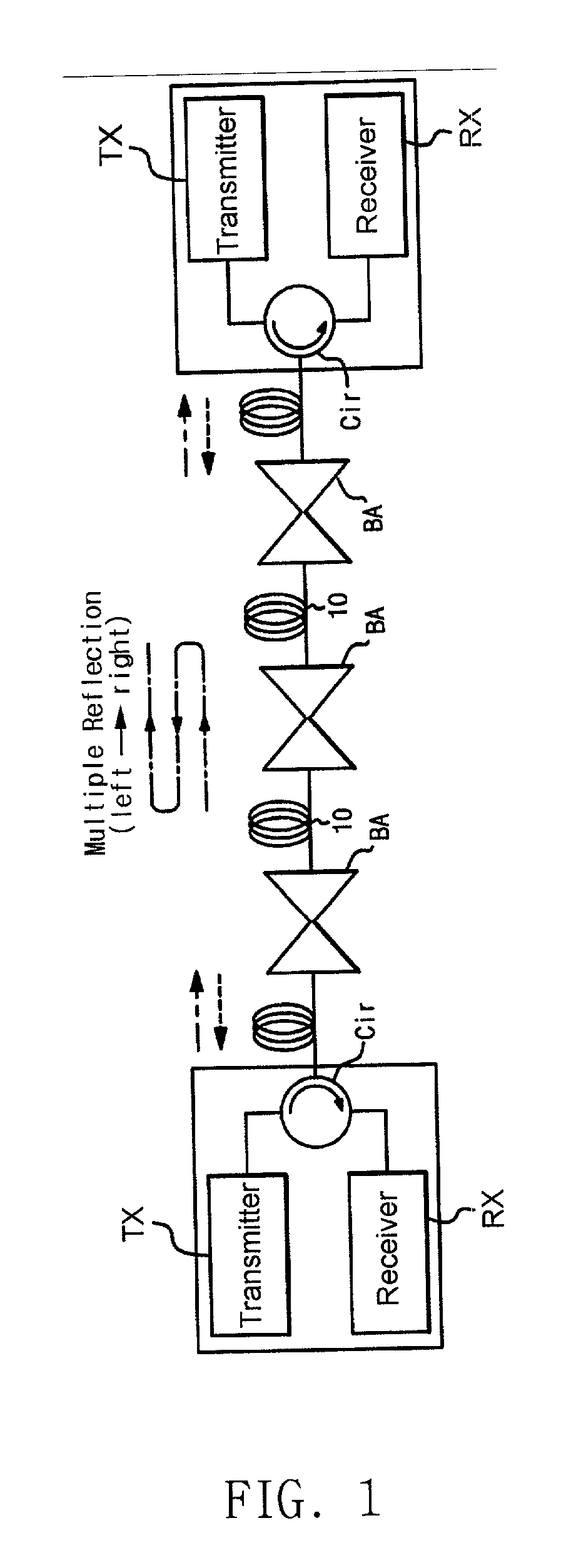4-port wavelength selective router
a wavelength selective router and router technology, applied in multiplex communication, instruments, optical elements, etc., can solve the problems of relative intensity noise, optical back reflection in bidirectional transmission systems, and inability to remove multiple reflected lights
- Summary
- Abstract
- Description
- Claims
- Application Information
AI Technical Summary
Problems solved by technology
Method used
Image
Examples
Embodiment Construction
[0035] The 4-port wavelength selective router (4pr) in accordance with the present invention is used in order to effectively route two groups of counter-propagating signals over a single optical fiber and also to suppress the relative intensity noise induced by multiple back reflections. The above two groups are defined as follows: the first group (Group A) consists of one or more optical signals of different wavelengths. The second group (Group B) consists of one or more optical signals of different wavelengths excluding the signals included in Group A. Here the methods for dividing the optical signals (Group A, Group B) are above mentioned band split scheme or wavelength-interleaved scheme.
[0036] As shown in FIG. 5, the 4-port wavelength selective router (4pr) has 4 ports (1, 2, 3, 4). Thus the possible combinations of port pairs are 6 in total ((1,2), (2,3), (3,4), (1,3), (2,4), (1,4)). The internal signals transmission paths exist between port pairs (1) and (2), ports (2) and (3...
PUM
 Login to View More
Login to View More Abstract
Description
Claims
Application Information
 Login to View More
Login to View More - R&D
- Intellectual Property
- Life Sciences
- Materials
- Tech Scout
- Unparalleled Data Quality
- Higher Quality Content
- 60% Fewer Hallucinations
Browse by: Latest US Patents, China's latest patents, Technical Efficacy Thesaurus, Application Domain, Technology Topic, Popular Technical Reports.
© 2025 PatSnap. All rights reserved.Legal|Privacy policy|Modern Slavery Act Transparency Statement|Sitemap|About US| Contact US: help@patsnap.com



